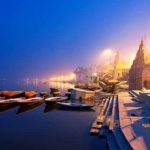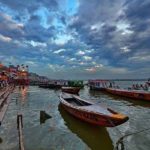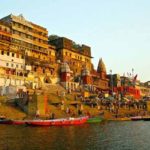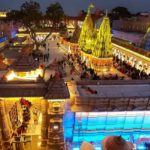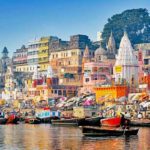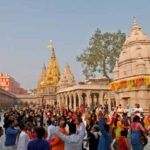Varanasi Tour Guide a city that oozes charm and mesmerizing beauty, is amongst the holiest cities in India and arguably in the world. With a massive number of temples, shrines, and ghats, for anyone who seeks the blessings of the almighty, Varanasi, should be at the top of their priority list.
Known as Lord Shiva’s City, this majestic place has a distinct essence in its soothing surroundings, which would certainly leave any visitor spell bounded. Many people from all over India visit the shores of the pious Ganges River and take a holy bath, which is believed to banish all the sins from the body and soul Varanasi Tour Guide.
If you are visiting Varanasi any time sooner, then boat riding at the holy Ganges river should be at the top of your bucket list. This would be an unforgettable experience of your life as the picturesque views from the rides have a charm of its own Varanasi Tour Packages.
The stunning panoramic experience of temples and practices of Hindu rituals would harmonize your heart and soul. You should also attend the glorious Aarti sessions at the Ganges River. Spiritual chants and the essence of aromatic surroundings will be an ideal experience if the person wishes for a calm and serene place to cherish.
This divine ceremony is even enhanced in magnitude when witnessed at the Dasaswamedh Ghat. The use of heavy brass lamps for the ceremony makes the experience even more satisfying Varanasi Tour Guide.
Another important landmark of Varanasi popularly known as Sarnath is renowned as the place where Lord Buddha illustrated Dharma. It is amongst the most prominent Buddhist sites all around the world. You can also witness the humongous pillar of Dharmekh Stupa. Also, the visual brilliance of the Ashoka Pillar would be a treat to your eyes. Varanasi is truly an alluring site that captivates travelers with its holiness and tranquility.
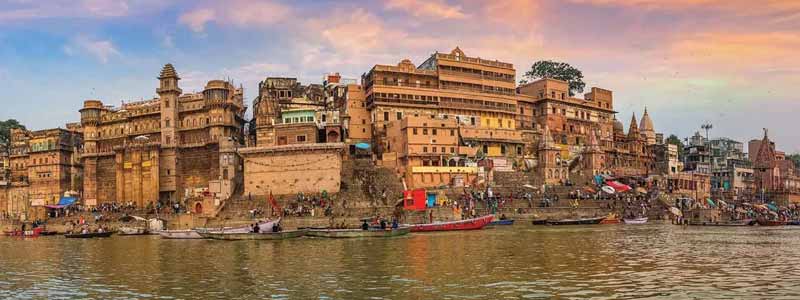
History
Almost midway in its long journey from the slopes of the mighty Himalayas to the inflamed shore of Bay of Bengal, the muddy waters of the Ganges flow by a city that is five centuries older than Christ. The city finds mention in the great epics of Mahabharata and Ramayana. It was already an old city when Rome was founded, and was a flourishing center of trade when Buddha came to Sarnath, some 10 km away, to preach his first sermon in 500 BC. It is a city of temples and for more than 2,500 years, it has attracted pilgrims from near and far.
According to Hindu belief, Benaras or Varanasi as it is known, is the cosmic center of the Universe. The renowned American novelist Mark Twain once wrote, “Benaras is older than history, older than tradition, older even than legend and looks twice as old as all of them put together” Varanasi Tour Guide.
Down the ages, Varanasi Tourism has stood as a symbol of Hindu renaissance. Swathed in an aura of history, religion, and tradition, Varanasi preserved the rituals and traditions of Hindu philosophy. From a time stretching beyond human memory, pilgrims from distant lands have come to Varanasi in search of divine blessings.
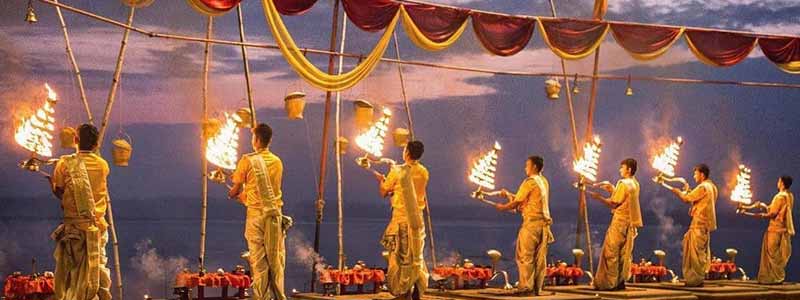
Best Places to Visit in Varanasi
The center of action in Varanasi can be found at the Banaras ghats — a series of giant steps leading to the Ganges River. In the morning, the devout descend the stairs to wash away their sins in the holy water, and at night, they return for fire-fueled prayer ceremonies.
The energy continues throughout the day in the labyrinthine old city. Legend has it that no accurate map has ever been drawn of Varanasi attractions complex web of twisting alleys. Expect to get lost and experience some of the best sightseeing of your life Varanasi Tour Guide.
Want to make the most of your time in “The City of Light”? Check out our list of the best places to visit in Varanasi Day Tours.
Dasaswamedh Ghat
The lively atmosphere of the Dasaswamedh Ghat makes it one of the best places to visit in Varanasi. This tourist attraction is a swirling hodgepodge of flower sellers touting bright blossoms, boat operators hawking rides along the Ganges River, and sadhus (holy men) with face paint. You can spend hours people watching in this area during the day.
Hindu priests put on the Ganga Aarti every night at the Dasaswamedh Ghat, starting at around 7pm. Donning saffron-hued robes, the priests spread out plates of flower petals and other offerings and blow a conch shell to signal the start of the spiritual ceremony. Varanasi Tour Guide Thousands of tourists gather to watch the priests chant and wave tiered plates of sandalwood-scented incense in intricate patterns for about 45 minutes. It’s an extravagant sight that you won’t want to miss.
Assi Ghat
When it comes to famous places in Varanasi, the city’s southernmost main ghat regularly tops the list. Assi Ghat’s star attraction is a Shiva lingam (phallic representation of the Hindu deity) beneath a sacred fig tree. It draws hundreds of pilgrims every day, who come to worship Lord Shiva after rinsing in the Ganges River.
Feeling a little stiff from traveling? Swing by Assi Ghat at sunrise, when you can get your downward-facing dog on with dozens of others during morning yoga accompanied by live music every day. Tourists can also see another Ganga Aarti performance here in the evening, which is slightly smaller and more intimate than the one at Dasaswamedh Ghat.
Manikarnika Ghat
Plumes of smoke swirl toward the sky at Manikarnika Ghat. No, it’s not from a factory — it’s from the perpetual cremations that happen on this ghat. Hindus believe that Manikarnika Ghat is one of the most auspicious places for the departed to reach moksha (emancipation from the cycle of spiritual rebirth). The funeral pyre at this ghat burns 24/7, and around 100 cremations take place every day.
Priests or guides frequently offer to lead tourists through the fascinating ghat, however some can be aggressive in their demands for money. You may see doms (members of an untouchable caste) carrying cloth-wrapped bodies on makeshift stretchers, along with piles of firewood stacked up, ready to feed the pyre Varanasi Tour Guide.
You may also be offered the chance to see a cremation up close — for a fee, of course. While profound, the experience is not for the faint of heart, nor is it a tourist attraction in the traditional sense. Know your limits, be respectful, and avoid taking photos of the funerals, mourners, and the departed.
Dhamek Stupa
Hinduism certainly has a stronghold on Varanasi, but Buddhism has a major presence less than 12 kilometers away in the village of Sarnath. Here, you’ll find the Dhamek Stupa, a massive stone and brick structure that’s 43.6 meters tall and 28 meters in diameter. The stupa was built more than 1,500 years ago as a replacement for a structure that dated back to 249 BCE.
The devout believe that the Buddha came to Dhamek Stupa to give his first sermon, which revealed the Eightfold Path, after he achieved enlightenment. Take a look at the elegant carvings of birds, people, and flowers that cover the walls of the stupa as you wander around the attraction.
Sarnath also has plenty of other tourist places that make it a worthwhile day trip destination from Varanasi. Check out the Chaukhandi Stupa (a Buddhist shrine that dates back to at least the 6th century), then make your way to the Sarnath Museum to see the Lion Capital of Ashoka, a sculpture that used to sit atop the Ashoka Pillar in 250 BCE and became the official Emblem of India in 1950. Round out the day with sightseeing at the peaceful Tibetan Temple before making your way back to Varanasi Tour Guide.
Banaras Hindu University
Banaras Hindu University has been a central part of Varanasi’s identity since its inception in 1916. The well-respected public university is home to more than 25,000 students, making it one of Asia’s largest residential universities.
There are no hill stations near Varanasi, so if you’re looking for an escape from the crowds and busy city, come to this lush 1,300-acre campus. The serene area is shaded by hundreds of tall trees and offers a breath of fresh air from the hectic atmosphere at the Banaras Ghats.
While on campus, swing by the New Vishwanath Temple, a famous temple that finally finished its decades-long construction in 1966. Standing 77 meters high, the temple is one of the tallest in India and draws architectural inspiration from the nearby Shri Kashi Vishwanath Temple.
Visitors to the university should also make a point to explore the on-campus museum, Bharat Kala Bhavan. The cultural institution features a spectacular collection of miniature paintings, along with over 100,000 other artifacts of archeological and artistic importance Varanasi Tour Guide.
Shri Durga Temple
Spiritual activities around Varanasi aren’t solely confined to the ghats. Just a five-minute walk west of Assi Ghat, the Shri Durga Temple is a popular attraction for Hindus who wish to pay tribute to the goddess Durga. You can’t miss the 300-year-old temple — it’s painted bright red from top to bottom Varanasi Tour Guide.
The temple’s nickname, “Monkey Temple,” gives you a clue about the creatures you might find swinging about in this area. You may also see a couple of graceful swans floating on the pool of water outside the temple.
Ramnagar Fort
There are few destinations in India without a fort, and Varanasi is no exception. About 14 kilometers from the city center, you’ll find Ramnagar Fort. The 18th-century sandstone fort and palace is no longer used as a defensive structure, but instead houses a quirky museum brimming with vintage automobiles, elaborate hookahs, antique weapons, sedan chairs decked out in jewels, and a one-of-a-kind astronomical clock that’s more than 150 years old.
After enjoying an archeological treasure hunt at the museum, check out the fort’s temples, Varanasi Tour Guide one of which honors Veda Vyasa, author of the Mahabharata and other important Hindu epics.

Best Time to Visit
Because of its proximity to the Tropic of Cancer, Varanasi Tour Guide enjoys a pleasant winter with a daytime temperature of around 20°C. The temperature can touch a low of around 10°C in late December and January with heavy fog in the early part of the day. October-November and February-March are usually comfortable and sunny.The summer season is, however, harsh in Varanasi. Beginning in April and continuing through June, it is extremely dry and daytime temperatures often climb up to as high as 45°C. The monsoon season, which starts by late June or early July, brings torrential rains and high humidity to the city. By late September, however, the weather returns to a comfortable level.
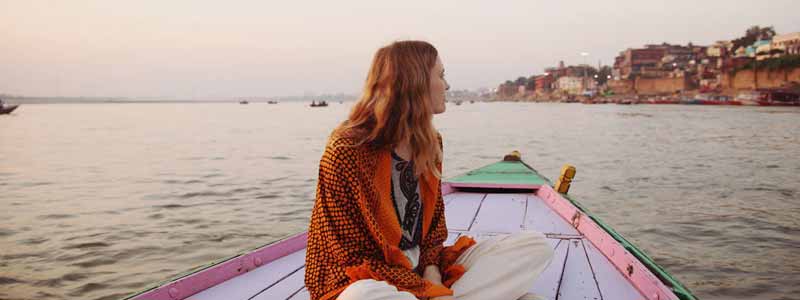
How to Reach
The captivating city of Varanasi Tour Guide is well-connected to several parts of the country with an extensive network of flights, trains, and buses. For this reason, it is incredibly convenient to commute in and around the city via different modes –
By Air : The nearest airport to reach Varanasi Tour Guide is the city air terminal. Lal Bahadur Shastri Airport is located 25 kilometers northwest of the city center. Regular domestic flights are catered in the airport. Flights from Kathmandu and Thailand are also accessible. Every domestic air carrier caters frequent flight options. From the air terminal; buses, auto and cabs are easily accessible to the city.
By Train : Varanasi Railway Station enjoys regular connectivity of trains from all over India. Mughal Sarai Railway station, 10 kilometers from the city also offers train options to numerous destinations in India. Long-haul trains as well as daily ferries are available. The railway station lies close to the city. Autos and cabs take you to any destination in the city.
By Road : Located in the plains of India, the road network to reach Varanasi is wonderful. By road the city is connected to major cities of Uttar Pradesh and neighboring states by state-run buses. Varanasi Tour Guide Private air-conditioned buses are available from nearby cities. Private air-conditioned and non-air conditioned cabs ply on the route.

